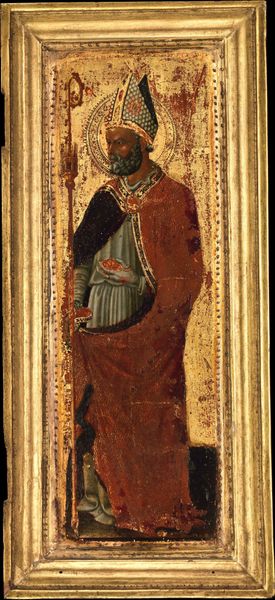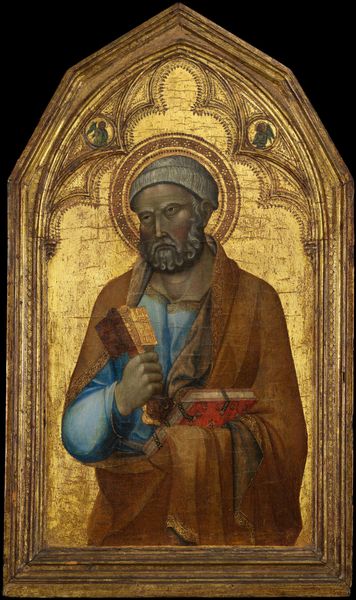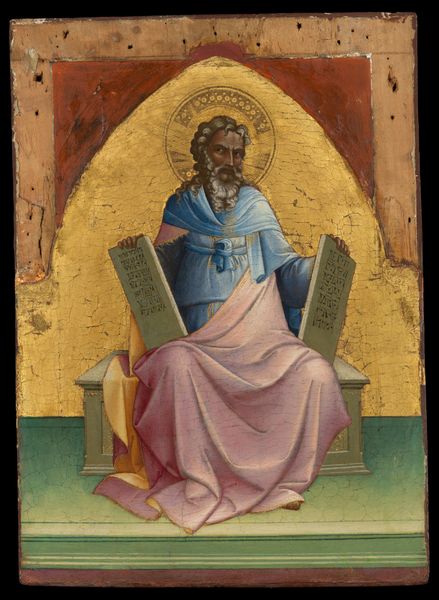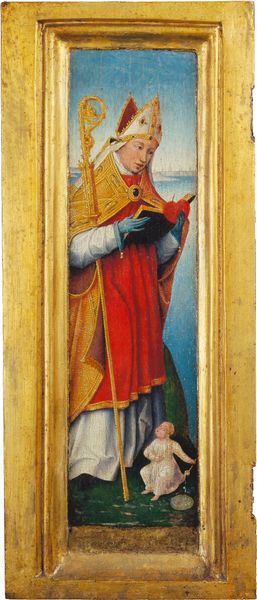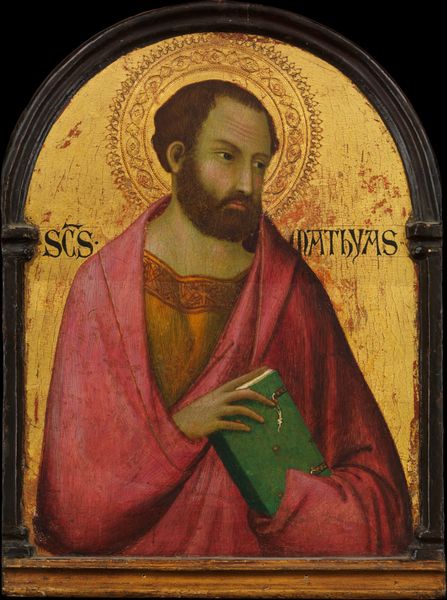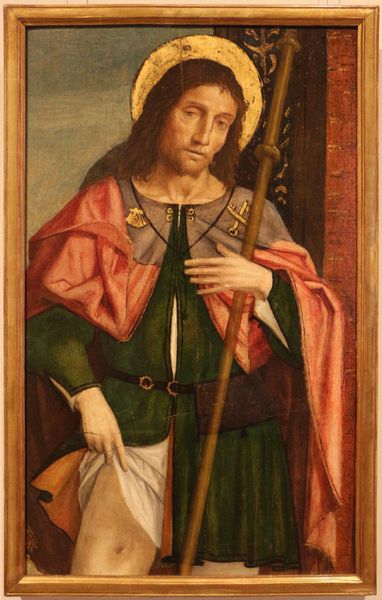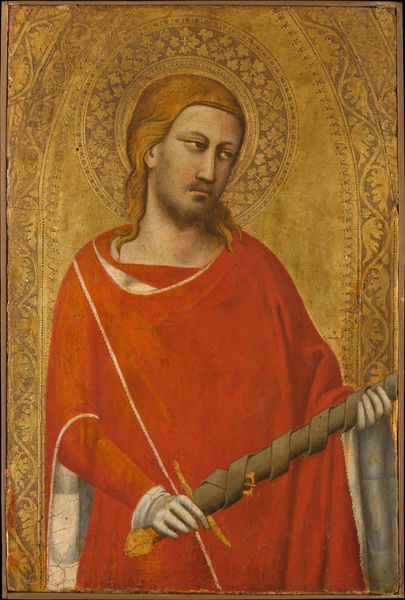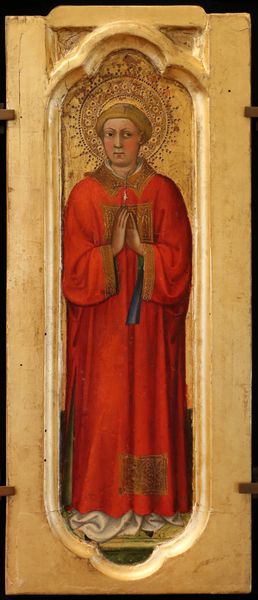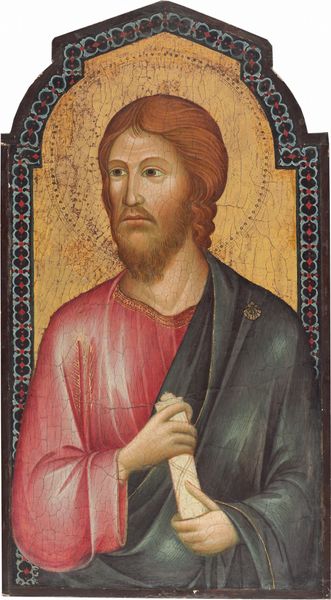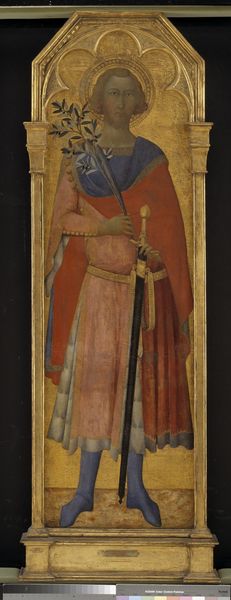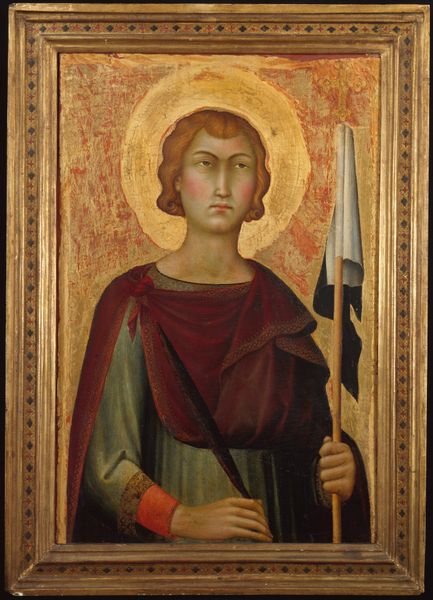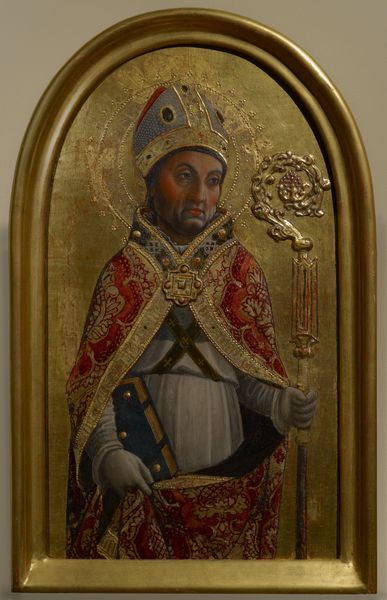
painting, oil-paint
#
portrait
#
painting
#
oil-paint
#
sculpture
#
figuration
#
oil painting
#
history-painting
#
italian-renaissance
#
portrait art
Dimensions: 21 5/8 x 12 1/8 in. (54.93 x 30.8 cm) (image)21 7/8 x 12 1/2 x 5/8 in. (55.56 x 31.75 x 1.59 cm) (panel)
Copyright: Public Domain
Vincenzo Foppa created this panel painting of Saint Paul, likely in the late 15th century, using tempera and gold leaf on wood. The smooth, luminous surface is achieved through the meticulous layering of egg tempera, a traditional technique involving pigments mixed with egg yolk. The gold leaf, applied to the background and details, adds a sense of divine radiance. These materials were prized for their ability to create rich, vibrant colors and a sense of otherworldly beauty. The process involved numerous skilled artisans, from those preparing the wooden panel to the painters and gilders themselves. This reflects a system of workshop production prevalent during the Renaissance, where specialized labor was essential for creating such refined works. Foppa's "Saint Paul" exemplifies how the materiality and making of art are deeply connected to the social and economic structures of its time, blurring the lines between fine art and craft.
Comments
minneapolisinstituteofart almost 2 years ago
⋮
Saint Paul and Saint Sirus are panel paintings likely from the same large altarpiece. Panel painting was a lengthy process that required many steps. The panel is a plank of wood that was prepared with many layers of gesso, a glue-size-chalk substance that forms the white base layer of the paintings. Gesso is also used to create the raised areas, or pastiglia, seen in each painting: the top of staff and edges of the headpiece in Saint Sirus and areas on the hilt of the sword in Saint Paul. Red bole, a size-clay mixture, was added to areas that were to be gilded with gold leaf. The final step was painting the figures in numerous layers of egg tempera, a paint made of ground pigments, water, and egg yolk.
Join the conversation
Join millions of artists and users on Artera today and experience the ultimate creative platform.

